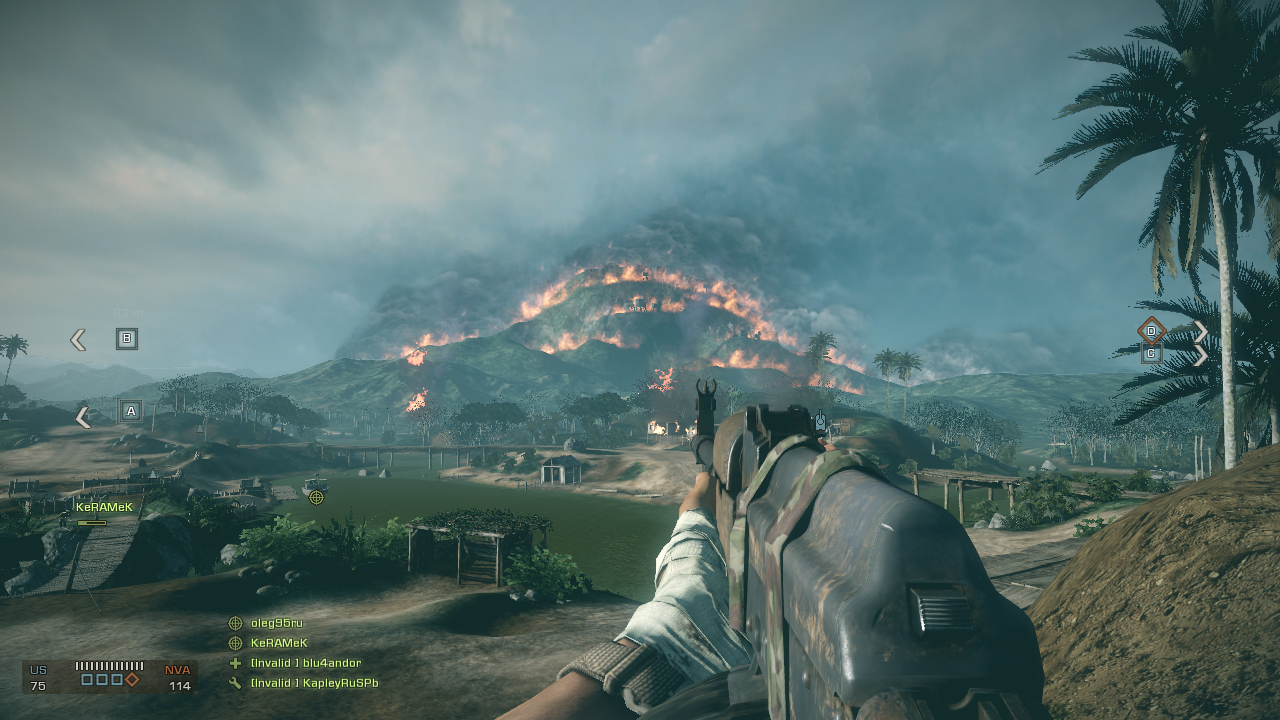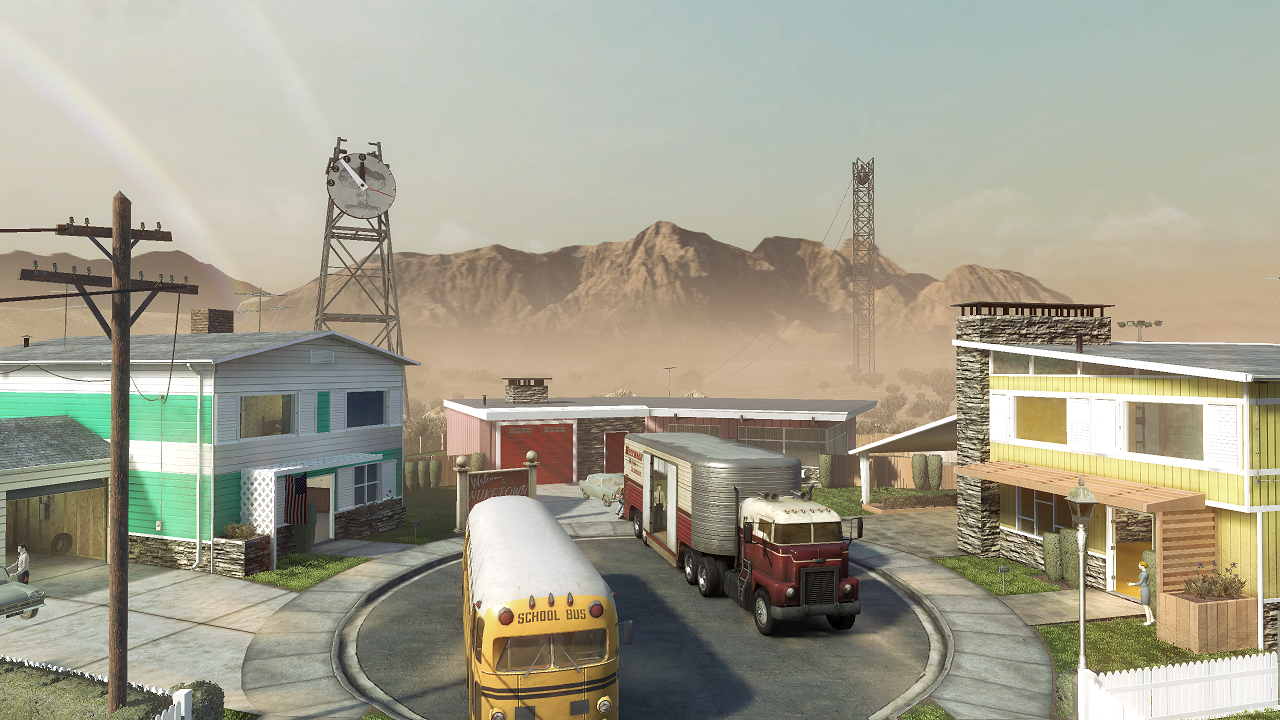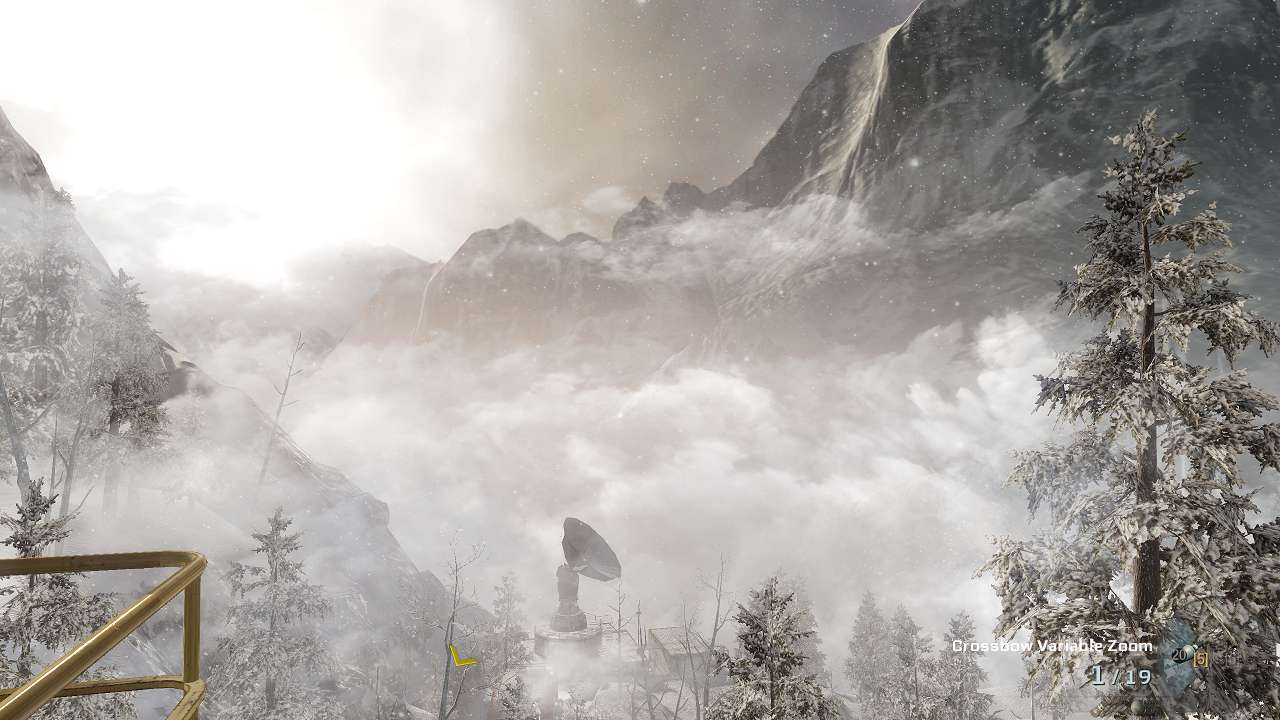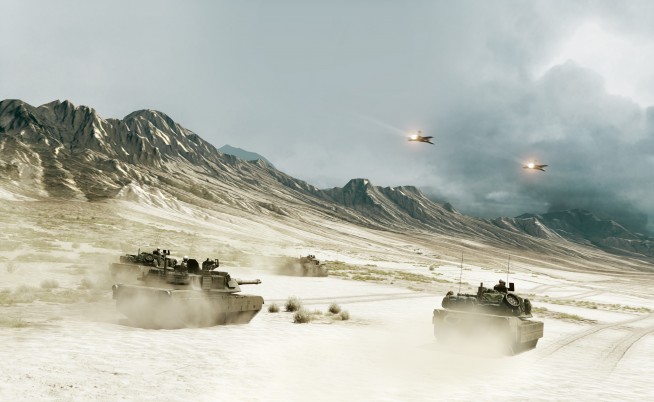Design Philosophy:
While DICE’s engines are optimized for scale (and Frostbite for scale + dynamics), Call of Duty’s are optimized for speed and accessibility. I hear a lot of fans recommending that the CoD developers should create a new, more modern and dynamic engine, but there’s a lot of advantages to sticking with the older techniques. Looking back at Id Tech 3, we see that computers at the time were nowhere near as powerful as they are now, and developers had to make every clock-cycle count. They did this in a lot of ways, like building maps out of brushes, which were then compiled into the final map. This approach eliminated up to 80% of superfluous polygons. It’s an example of how making a map less dynamic drastically improves performance. The same can be said for using static lighting instead of dynamic lighting.
This trade-off goes beyond the engine itself. It also goes into how levels are designed.
Battlefield: Bad Company 2: Vietnam (Operation Hastings):

Take a look at the gigantic flaming mountain from Battlefield’s Operation Hastings. Why is there said gigantic flaming mountain?
From DICE’s perspective it makes perfect sense. Battlefield’s epic landscapes make the game that much more immersive and fun. It’s part of the appeal of Battlefield: the engrossing experience.
But to a studio like Treyarch, the mountain is just sitting there, not contributing anything to gameplay, but eating up your frame-rate. This means that Call of Duty will often take a design-approach that’s easier on your GPU, like using flat images for backgrounds and distant objects. This isn’t always the case however, particularly in the campaign, where massive set pieces can be just as important to Call of Duty as they are to Battlefield. Looking at the two screenshots below, you’d hardly believe that they’re from the same game.
Black Ops Multiplayer (top) vs. Singleplayer (bottom):


This is one of the reasons why CoD is often accused of being ‘lazy,’ but ultimately it’s a trade-off: a choice the developers make to improve performance and accessibility at the cost of detail. I think the IW engine looks quite good when the developers have the freedom to make a rich, detailed map, like in this machinima:
[youtube id=”sQuYS9pNBuY” width=”600″ height=”350″]
Comparing Battlefield Heroes to Battlefield Play4Free brings up another interesting point. A game’s aesthetic can drastically affect the way it looks. Remember, both battlefield Heroes AND Battlefield Play4Free were built on the same Refractor 2 technology.
Battlefield Heroes:
[youtube id=”jxNnl5t_Hak” width=”600″ height=”350″]
Battlefield Play4Free (using the same engine):
[youtube id=”zU6cA615Agc” width=”600″ height=”350″]
What I’m getting at, is that how good a game looks depends on much more than the engine itself. A lot of it has to do with the choices the designers, the artists, and the developers make. Likewise, how good a particular map looks (especially in multiplayer) can be a poor indicator of how capable a 3d engine is.
Conclusions?
When a studio builds a game, they have to make compromises. You can have a game that runs on a wide range of hardware, but the graphics may take a hit. You can enforce realistic player movement, but it will hold them back. You can give the player all the freedom in the world, but don’t expect them to always play fair.
These compromises make the games what they are. Every decision depends on a dozen others, because they all have to work together. If you want destruction, then you need a dynamic engine, and if you want a dynamic engine, you need time to build it. If you want your gameplay to be accessible, then you better make sure your graphics engine is too.
The beauty of having both Battlefield and Call of Duty, is that we — the fans get to choose.
It’s easy to see why these franchises step on each others’ toes once in a while. They both appeal to a lot of the same people. They’re both military shooters that span the century. They both offer a degree of character customization. They even end up borrowing from the competition, but ultimately, they don’t so much compete as compliment each other: doing some things very well, and avoiding the things they can’t, and probably shouldn’t do.
That’s why we need both.
If you enjoyed this analysis, please leave your thoughts and comments below and don’t forget follow @MPFirst on Twitter and like us on Facebook!
